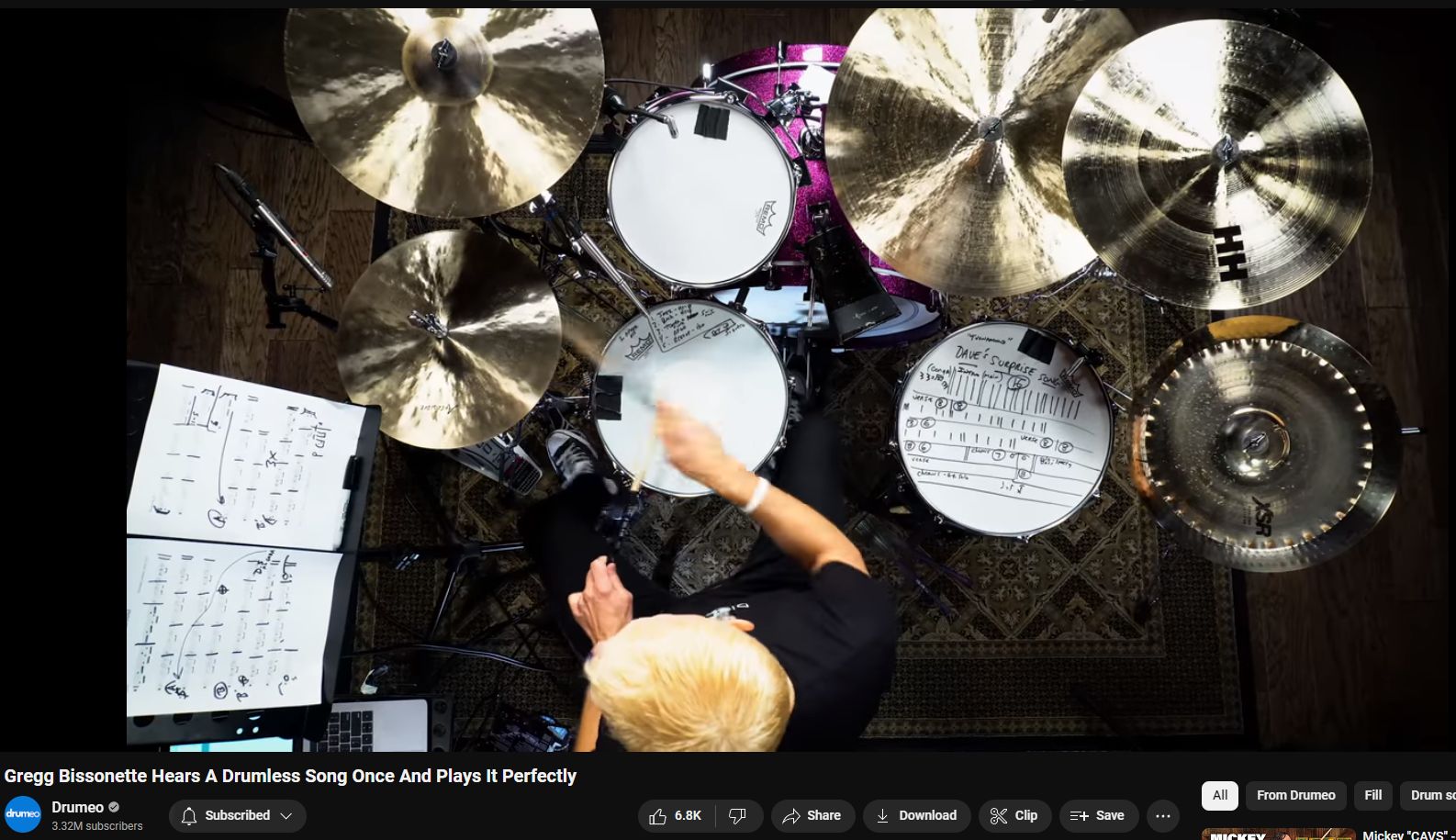Make Drum Track
Sit in on an impromptu recording session with a pro session drummer.
https://www.youtube.com/watch?v=OMALS_mIg1E

===
A drum chart, also known as a drum score or drum notation, is a written representation of a drum part or rhythm. Drum charts are used by drummers to learn and perform music accurately, particularly in situations where sheet music or written notation is provided.
Here are some key components of a drum chart:
1. Stave: The stave is the five horizontal lines on which musical notes and symbols are written. Each line and space represents a different drum or percussion instrument. In drum notation, each line typically corresponds to a specific drum or cymbal, such as the bass drum, snare drum, hi-hat, and cymbals.
2. Notes and Rests: Notes indicate which drums or cymbals to play, while rests indicate moments of silence. Each note or rest is placed on the appropriate line or space of the stave to indicate which drum or cymbal to play or when to remain silent.
3. Time Signature: The time signature indicates the meter or rhythmic structure of the music, specifying the number of beats per measure and the type of note that receives one beat. Common time signatures in drum charts include 4/4 (four beats per measure, quarter note receives one beat) and 3/4 (three beats per measure, quarter note receives one beat).
4. Tempo Marking: The tempo marking indicates the speed at which the music should be played, typically measured in beats per minute (BPM). It provides a reference for the drummer to maintain the correct tempo throughout the piece.
5. Repeats and Endings: Repeat signs indicate sections of music that are repeated, while ending marks indicate where to skip to after repeating a section. These symbols help organize the structure of the music and streamline the reading process.
Sight reading refers to the ability to read and interpret music notation in real-time without prior rehearsal or practice. For drummers, sight reading involves quickly deciphering drum charts and accurately performing the rhythms indicated. Sight reading is an essential skill for drummers who perform in various musical settings, such as studio recording sessions, live performances, and pit orchestras.
To improve sight reading skills, drummers can practice regularly with a variety of drum charts covering different musical styles and genres. They can also work on developing rhythmic fluency, coordination, and familiarity with common drumming techniques and patterns. Additionally, utilizing resources such as sight reading exercises, books, and online tutorials can help drummers enhance their sight reading proficiency over time.
